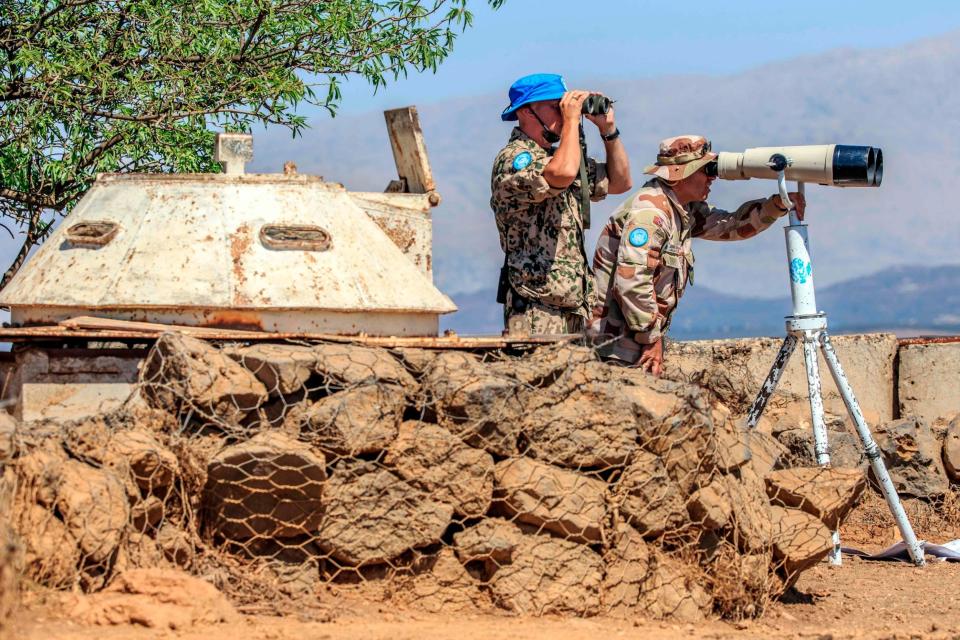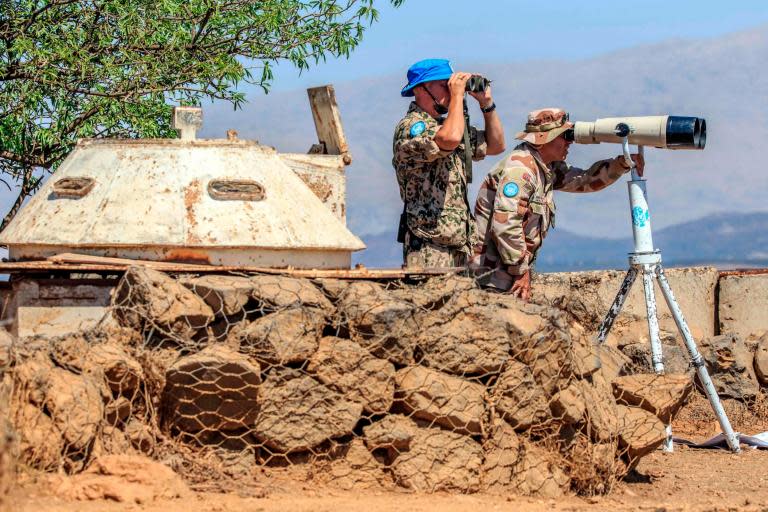Why is Trump’s Golan Heights announcement controversial?
What is the Golan Heights and what is its current status?
The Golan Heights is a narrow strip of mountainous land, roughly 1,800sq km, bordering Syria, Israel, Jordan and Lebanon.
It has officially been recognised as part of Syria since 1944 – when the country was recognised as an independent republic – but was captured by Israeli forces in the 1967 Six-Day War, thereafter becoming Israeli-occupied territory.
No country in the world has recognised Israel’s annexation of the Golan Heights – which might change soon, following Donald Trump’s call for recognition.
Syria tried to get it back in a surprise attack in the 1973 Arab-Israel War, but was defeated in a huge tank battle and forced to sign a ceasefire deal.
A UN peacekeeping force has been deployed in the Golan Heights since that time to monitor the ceasefire and patrol the demarcation line between Syrian and Israeli-controlled areas.
The United Nations considers the Golan Heights as part of Syria, and passed UN Resolution 242, which calls on Israel to withdraw from all territory it occupied in the 1967 war – including the Golan Heights, Gaza and the West Bank. Israel has refused to do so.
How much control does Israel have over the Golan Heights?
Israel occupies two-thirds of the territory, and in 1981, formally recognised it as part of the country.
It has also – in violation of international law – began construction in the territory and moved settlers there.
Initially secret talks began in the late 2000s between Syria and Israel that reportedly included the possibility of Israel returning the territory in exchange for a peace deal with Damascus, but negotiations collapsed after Israel launched a war in Gaza in 2008.
Why do both Syria and Israel want sovereignty over the Golan Heights?
Prime minister Benjamin Netanyahu has vowed that the Golan Heights will always be part of Israel, and Syria, which does not recognise Israel, wants the territory back.
It is a strategically important territory for the two enemy countries with its elevated position – nearly 3,000m above sea level – allowing a viewpoint into southern Syria, northern Israel and southern Lebanon.
When Syria had control of the Golan Heights, its military was able to use positions to shell Israeli communities below.
But Israel’s possession of the land also gives its military a clear view into Syria, all the way to the capital Damascus some 60km away.
It is also resource-rich and borders the Sea of Galilee, where Jesus allegedly walked on water.
The sea is an important freshwater source and Israel’s largest reservoir – once accounting for 30 per cent of the country’s water sources.
But it is starting to dry up, which is having a knock-on effect on the Jordan river, which it feeds into, and the rapidly shrinking Dead Sea.
Why has the US made this announcement about the Golan Heights now?
The US, in line with international law and consensus, had refrained from accepting Israel’s claim to sovereignty over the Golan Heights.
But although Mr Trump’s announcement is controversial, it is unlikely to have taken many by surprise.
It follows a series of moves that have delighted Israel but infuriated the Arab world, including recognising Jerusalem as Israel’s capital and moving the US embassy there.
This announcement has also reportedly been in the works for some time.
According to a Reuters interview with the country’s intelligence minister Yisrael Katz in May 2018, the matter was “topping the agenda” in bilateral talks, with Israel pressing the Trump administration to recognise its sovereignty over the territory as part of the US pushback against perceived regional aggression by Iran.
Iran is a key ally to Damascus and its military support in the Syrian war has been crucial to giving Syrian president Bashar al-Assad the upper hand.
“This is the perfect time to make such a move. The most painful response you can give the Iranians is to recognise Israel’s Golan sovereignty – with an American statement, a presidential proclamation, enshrined [in law],” Katz said.
Who lives in the Golan Heights now?
Today more than 40,000 people live in the Golan Heights, according to Israeli government estimates.
The population is a mix of Syrians and Israeli settlers. Most of the Syrian residents are those that fled there during the 1967 war and are members of the Druze faith.


